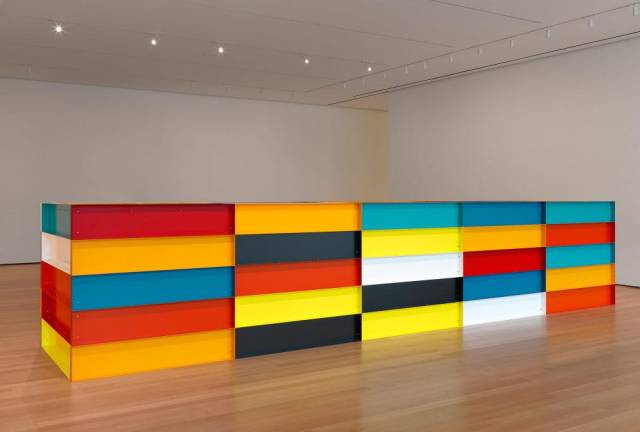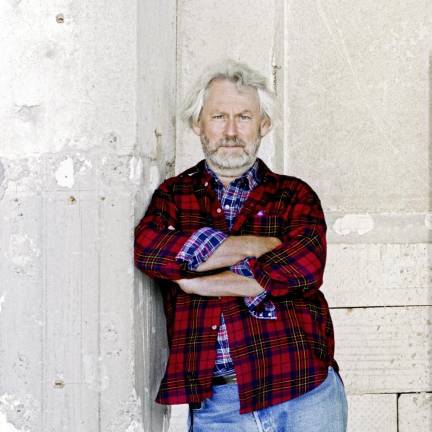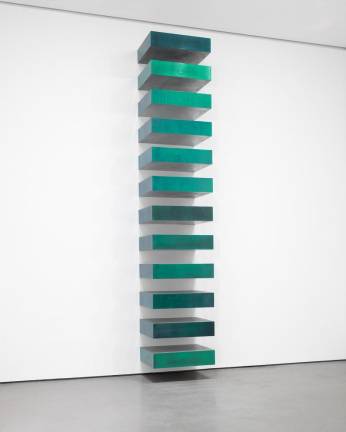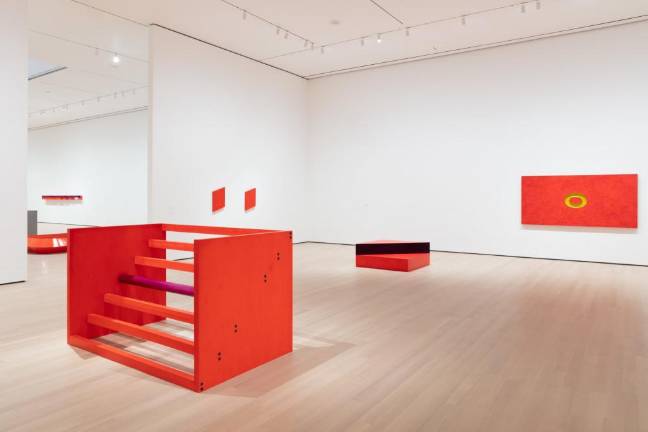As the shelter-in-place orders continue and New York City’s museums and cultural spaces remained closed indefinitely, art in the time of COVID-19 has shifted online, with a wealth of resources to engage the eye, the mind and the spirit.
The Museum of Modern Art’s many offerings include a new weekly series, Virtual Views, featuring exhibits and objects from the collection that can be experienced from the comfort of your home—say, in between the 20-second hand washings or the daily virus briefings from the Mayor and the Governor.
The data got you down? Click on links to video stories, audio playlists, magazine articles and YouTube that are uploaded each Thursday, and let art’s healing powers take over and change the conversation.
In short, if you missed the opening of “Judd” in early March, MoMA has you covered. The virtual career survey of this seminal 20th century artist who defined Minimalism, but rejected the term, presents the works in tandem with a video introduction by MoMA curator Ann Temkin, a Q&A with Flavin Judd (Judd’s son), an interview with artist Roni Horn, a webinar devoted to Judd’s critical writings, audio commentary by contemporary artists and writers, and lots more.
Donald Judd (1928-1994) was born in Excelsior Springs, Missouri, and moved to New York City in the 1950s. He was primarily a sculptor, though he thought of his works as “specific objects,” not sculptures per se, which were weighty and stood on pedestals. He was doing something completely different and original — something that was arguably not even art.
He is known for his sharp-edged floor boxes, wall reliefs, “stacks,” “channels” and “progressions,” which he designed on paper in his studio and were fabricated off-site by skilled industrial workers, using ordinary materials like plywood, stainless steel and Plexiglas.
“I spent a lot of time looking around,” he once said. “I’d see a nice piece of aluminum tubing or a strip of plastic on Canal Street, and I’d buy it.”
Air and Space
Artist Jamie Dearing, who began working as a studio assistant for Judd in 1967, summarized the artist’s three main concerns on the MoMA audio guide—“color, materials, and space.”
For Judd, the space within, outside and between his objects was as important — actually more important — than the objects themselves. As the organizers state, “the works challenge prior assumptions regarding sculpture’s solidity and weight.” Mass was of less concern than the air and space that enveloped it.
“Judd’s work is organized in terms of hollow volumes and negative spaces ... The air can be completely enclosed, as for example inside a box on the floor or the wall, or can pass through the elements of a work, as in the intervals within the works known as ‘stacks’ and ‘progressions,’” Temkin, the museum’s chief curator of painting and sculpture, writes in the catalog.
The artist began his career as an abstract painter and pivoted to three-dimensionality in 1962 in order to explore “real space.” The show, which opened on the 6th floor and occupied four expansive galleries, included 70 works — paintings, drawings, prints and an abundance of Judd’s signature boxes and right-angled constructions that you could walk around, peer into and quietly take the measure of.
All but two of the works are untitled, hence the descriptive terms “progressions,” “bullnoses” and so forth. His best-known form, the “stack,” is a column—not a solid column, but a column of shallow boxes, like pizza boxes, separated by airy spaces.
Objective Facts
Says sculptor Charles Ray on the audio guide about the brilliantly green “Untitled” (1967), probably Judd’s most famous piece: “The presence of a column of air as well that went through the stack is as strong as the fabricated boxes. You can’t move the column off the wall, not because of the screws that obviously hold it onto the wall, but because ... that column of air in that specific place is locking the sculpture.”
Judd experimented with the format endlessly, producing different iterations — using different colors, materials and dimensions — throughout his 30-year career. His 3-D works are all purposely devoid of narrative content, reference to the human body or subjective expression of any kind. He presented his pieces as objective facts. Make of it what you will.
The poet and art critic John Yau finds joy in this stripped down aesthetic, especially in the sculptor’s exuberant use of color. He had a special fondness for cadmium red light. “It’s funny, he’s called Minimalist, but I think he thought expansively ... when he does get into the work, there’s a kind of feeling. In a way, it’s kind of celebratory. It celebrates color just for being what it is, that color,” he says on the guide.
“I think as a society, we’re always driven to be productive — meaningful in some way that we can use. And he’s saying, ‘It might be meaningful in a way that you can’t just use. Maybe you should just enjoy it. Right?’"
Yau adds: "Wallace Stevens said, ‘A poem must give pleasure.’ I get a lot of pleasure looking at Donald Judd’s work. It makes me happy. It changes my mood. How many people can do that?”
The world needs Judd, now more than ever.
See “Virtual Views: Judd” on The Museum of Modern Art’s website: mo.ma/judd
"I get a lot of pleasure looking at Donald Judd’s work. It makes me happy. It changes my mood. How many people can do that?" Poet and art critic John Yau



